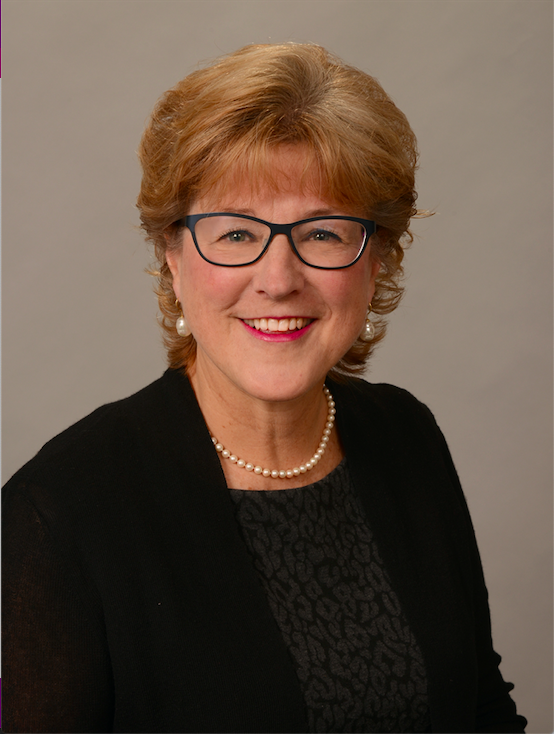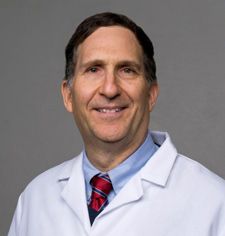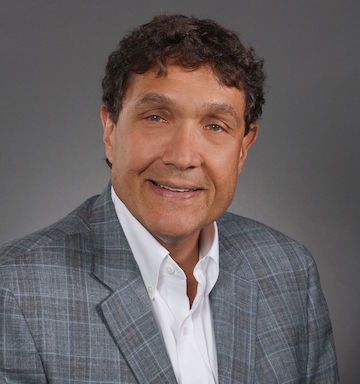Article
Dr Kami J. Maddocks Highlights Progress of Last 5 Years in DLBCL
Author(s):
Kami J. Maddocks, MD, professor of clinical internal medicine in the Division of Hematology at The Ohio State University Wexner Medical Center, spoke with The American Journal of Managed Care® (AJMC®) about treatment approaches for diffuse large B-cell lymphoma (DLBCL).
Kami J. Maddocks, MD, is a professor of clinical internal medicine in the Division of Hematology at The Ohio State University Wexner Medical Center in Columbus, Ohio. A specialist in treating patients with B-cell malignancies, Maddocks is an investigator on several clinical trials evaluating non-chemotherapeutic approaches to the treatment of lymphoma. She serves on the Alliance Lymphoma Committee, a multi-institution working group to develop clinical trials in lymphoma. Maddocks spoke with The American Journal of Managed Care® (AJMC®) about treatment approaches for diffuse large B-cell lymphoma (DLBCL).
AJMC®: Let's begin with a discussion about this disease state itself. Could you tell us what is diffuse large B-cell lymphoma? What does that term mean to you?
Maddocks: Diffuse large B-cell lymphoma is a subtype of B-cell non-Hodgkin's lymphoma. Diffuse large B-cell lymphoma is actually the most common lymphoid malignancy in the most common type of non-Hodgkin's lymphoma.
AJMC®: What are some of the patient risk factors for developing DLBCL?
Maddocks: Age is actually a risk factor for the development of diffuse large B-cell lymphoma, with the median age in the mid-60s at diagnosis. And there's actually a male predominance to diffuse large B-cell lymphoma.
AJMC®: DLBCL can be a somewhat heterogeneous term. There's potentially a lot of different diseases that fall under that banner. Can you tell us a little bit about the further classification involved with DLBCL? In addition, could you elaborate on what it means to have relapsed or refractory DLBCL?
Maddocks: Relapsed or refractory diffuse large B-cell lymphomas is often categorized together, but the difference really is relapsed diffuse large B-cell lymphoma is defined by patients who have an initial response to treatment, with resolution of the disease as detected by standard measures such as imaging with PET scans, but later [there is] a recurrence. Whereas refractory disease is really defined by disease that does not achieve response to that initial therapy or relapses within a very short time of completing therapy. Diffuse large B-cell lymphoma really is thought to be a heterogeneous disease in terms of morphology, genetics, and biologic behavior. The World Health Organization does classify some different types of diffuse large B-cell lymphoma or the types of aggressive B-cell lymphomas as separate entities. But some of these are treated very similarly to diffuse large B-cell lymphoma, whereas others are treated a little bit differently, such as high-grade B-cell lymphomas with or without translocations of C-MYC BCL-2 and or BCL-6, and primary mediastinal lymphoma. Diffuse large B-cell lymphoma can be further defined by gene expression profiling, which has defined distinct subtypes of diffuse large B-cell lymphoma as defined by cell of origin, including the germinal center B-cell subtype or GCB and activated B-cell subtype or ABC. And these different subtypes have been shown to have different outcomes to standard treatment. Although at this time they are treated the same, there's not specific treatment approaches to these different subtypes. A few groups have further defined subgroups of aggressive B-cell lymphomas based on comprehensive assessment of gene mutation and copy number changes. But again, this further can help define these groups but doesn't at this time change treatment.
AJMC®: You mentioned earlier that diffuse large B-cell lymphoma is a common type of lymphoma. Could you elaborate further on the incidence and prevalence of this disease and how it compares to other types of non-Hodgkin lymphoma?
Maddocks: The entire basket of non-Hodgkin's lymphoma was the seventh most common type of cancer in men and six most common type of cancer in women in the year 2021 with about 81,500 cases diagnosed. When we look at diffuse large B-cell lymphoma, this is the most common type of non-Hodgkin lymphoma (NHL). And over the past couple of decades, [DLBCL] has represented somewhere between 30% to 35% [of NHL]. So, about a third of cases of non-Hodgkin lymphoma, including close to 26,000 cases diagnosed in the year 2021. When you look at this in comparison to other subtypes, the next most common would be follicular lymphoma, which represents just under 20% of non-Hodgkin lymphoma, and looking at less common subtype, such as marginal zone lymphoma representing about 6% to 8%, mantle cell lymphoma representing about 3% to 5%, and then T-cell lymphomas representing about 2% of the non-Hodgkin lymphomas.
AJMC®: Can you summarize briefly the current treatment landscape for diffuse large B-cell lymphoma? How is DLBCL treated initially? And perhaps, what is the role of stem cell transplantation for this disease? Which patients are eligible?
Maddocks: The current standard of care for the majority of patients with newly diagnosed diffuse large B-cell lymphoma is a chemoimmunotherapy regimen called R-CHOP which incorporates rituximab immunotherapy along with CHOP chemotherapy (cyclophosphamide, doxorubicin hydrochloride [hydroxydaunorubicin], vincristine sulfate [Oncovin], and prednisone). This has been the standard of care for several years. There have been several frontline studies aiming to improve upon outcomes of R-CHOP, but really until recently, there have not been a positive randomized phase 3 trial in this setting. The POLARIX trial was a randomized phase 3 trial that treated patients with either R-CHOP or R-CHP in combination with the CD79B antibody-drug conjugate get polatuzumab vedotin. This trial just reported out in late 2021 as a positive trial, showing an improvement in 2-year progression-free survival in the polatuzumab or experimental arm.1 This is likely to change a standard of care at least in a subset of these patients with newly diagnosed diffuse large B-cell lymphoma. We know that we cure somewhere between 60% to 70% of patients with frontline treatment with chemoimmunotherapy for those patients who relapse or refractory to treatment autologous stem cell transplant is considered in the relapsed or refractory setting. For patients who relapse after a refractory to frontline therapy and are considered fit to tolerate a transplant, they're treated with a second-line chemoimmunotherapy regimen. And then if they achieve either a complete response to that treatment or a very good response, something that indicates that they were sensitive to chemotherapy and the diseases responding to chemotherapy, then they can proceed to high-dose therapy followed by stem cell rescue.
AJMC®: And how does treatment evolve with frontline chemotherapy being fairly ubiquitous at this point? What drug therapies are we seeing once we get to the first relapse, second relapse, or additional relapses after that?
Maddocks: That field is also currently involving, but for right now, for patients who do not respond to salvage chemoimmunotherapy, there are 3 approved CD19 directed autologous chimeric antigen receptor T-cell products or [chimeric antigen receptor] CAR T-cell therapies: axi-cel vs tisa-cel and liso-cel (axicabtagene ciloleucel, sold as Yescarta; tisagenlecleucel, sold as Kymriah; and lisocabtagene maraleucel, sold as Breyanzi). These products can be used in later lines of therapy including patients who don't respond to chemoimmunotherapy with intent to go to transplant or who relapse after transplant. This is an also an evolving treatment landscape. So, at the end of 2021, we also saw results of 3 randomized trial looking at comparing these 3 different agents to the standard of care with salvage and autologous stem cell transplant in patients who were considered high-risk. Either refractory to, or relapsed within a year of completing salvage chemotherapy. And 2 of those 3 trials were positive trials showing an improvement in [progression-free survival] with second-line CAR products in those high-risk patients.2-4 That's expected to change the landscape there.
There's also been a number of novel therapies approved in the last 5 years for patients who are either not candidates for transplant or who relapse after transplant or who aren't candidates or don't have access to CAR T-cell therapies. There's 2 antibody-drug conjugates, one, polatuzumab, which I mentioned the CD79B ADC, which is improved in combination with bendamustine and rituximab. There's a second antibody-drug conjugate called loncastuximab, which is directed at CD19. The novel immunotherapy tafasitamab, which is a CD19 antibody in combination with the oral lenalidomide has been approved for patients at first relapse or later.5 And then lastly, there's an oral pill called selinexor, which is a selective inhibitor of nuclear export that's been approved for patients after 2 or more prior therapies.
AJMC®: I'd like to ask you a little bit more about tafasitamab. You were the senior author on the L-MIND study looking at that therapy and lenalidomide together in the relapse refractory DLBCL setting. Can you tell us a little bit more about this study? How was it designed? What population were you looking at here with this study?
Maddocks: L-MIND study was a multicenter single-arm phase 2 study that enrolled patients who had relapsed diffuse large B-cell lymphoma who were not eligible for autologous stem cell transplant and had received one to three prior therapies. The treatment consisted of doublet immunotherapy. Patients were treated with a combination of the novel CD19 antibody tafasitamab in combination with the oral immunomodulator lenalidomide. The treatment consisted of lenalidomide given orally at a dose of 25 milligrams days one through 21 of 28 days cycles in combination with tafasitamab infusions, which were given weekly for the first three cycles, and then biweekly first cycles 4 through 12. After that year of combination therapy, patients responding to treatment were continued on single-agent tafasitamab biweekly. There were 80 patients enrolled in this trial. The initial read-out of the trial reported an overall response rate of 60% with a complete response rate of 43% and a median progression-free survival of 12 months.6 When you look at this therapy, they have reported longer follow-up with medium follow-up of close to 4 years, showing a duration of response of over 40 months in the full efficacy population and not reached in those patients achieving a complete response. Really what I think, when you look at this data, what it's really showing is that there is a population of patients with relapsed diffuse large B-cell lymphoma who were candidates for more aggressive treatment who have achieved very durable remissions with this immune doublet therapy.
AJMC®: As a result of this trial, where does this doublet therapy fall in the treatment landscape at the moment? Is this something that can be used instead of CAR T-cell therapy? What are your thoughts?
Maddocks: The results of this trial are very promising in a population of patients who are not candidates for a more aggressive approach. I think it's hard to directly compare [these results] to CAR T cell patients. Currently, I think of this somewhat as different patients that are eligible for those therapies as a different population of patients. But I really think where this fits very well in the treatment landscape is for patients who relapse after a refractory to frontline chemotherapy with R-CHOP and aren't considered candidates for a more aggressive approach. I think the trial did show that the patients enrolled on the trial, the responses were best when it was used as a second-line therapy. And this is where I use it and think that it is best. Hopefully, we get more real-world data, but I think there are a lot of questions about sequencing of CD9-directed therapies. So, can this be used pre- and post-CAR T? And I just don't think we have enough data on those scenarios. But in a patient who is not a candidate for more aggressive chemoimmunotherapy, isn't going to be a candidate for CAR T [or] doesn't have access to CAR T therapy, I think that this is an excellent second-line choice.
AJMC®: What are you looking most forward to in the DLBCL world in the coming next 2 to 3 years? What's on the horizon that excites you?
Maddocks:I think when you look at the treatment landscape and how it's changed over the last 5 years, that it's a really exciting time in diffuse large B-cell lymphoma. Five years ago, all these treatments outside of R-CHOP that we talked about, we didn't have access to, they weren't approved. In relapsed/refractory disease, the landscape has certainly changed significantly. And now after several years, we saw a positive trial in the frontline setting. And I think that's really exciting as well. That positive trial may change somewhat the approach in the relapsed/refractory setting given that one of those treatments was one of the options in relapsed/refractory setting. But I think to me, one of the most exciting things is the bispecific antibodies. So, those that are targeting CD20 on the B-cell and CD3 on the T-cell are the most reported. But these have shown high response rates including in patients who both pre- and post-CAR T the post patients who progress after CAR T can have disease that can be difficult to get under control. That, I think is probably one of the most promising. There's also other antibody drugs conjugants that are showing some early promise, and I think further improving upon CAR T-cells. Right now, we have these autologous directed CD19 products, but there's bispecific and trispecific CARs out there. There are allogeneic CARs being investigated that make it the potential to be easier and quicker to get to the patient. And so, all these different, a lot of which are immunotherapy approaches, I think are one of the most exciting things for the future.
AJMC®: Do you have any closing thoughts on DLBCL and disease manage management and considerations that you might have for this. Or if you want to speak to our audience, our audience of payers and healthcare decision-makers, anything that you think they should know about DLBCL going forward.
Maddocks: The biggest thing that I like to get out there is we've seen significant improvements in our treatment approaches even in the last 5 years. And so, I think it's an exciting time and I look forward to further advances in both the frontline and relapsed refractory setting for diffuse large B-cell lymphoma.
References
- Tilly H, Morschhauser F, Sehn LH, et al1. Polatuzumab vedotin in previously untreated diffuse large B-cell lymphoma. N Engl J Med. 2022;386:351-363. doi:10.1056/NEJMoa2115304
- Locke FL, Miklos DB, Jacobson CA. Axicabtagene ciloleucel as second-line therapy for large B-cell lymphoma N Engl J Med. 2022;386(7):640-654. doi: 10.1056/NEJMoa2116133
- Kamdar M, Solomon SR, Arnason JE, et al. Lisocabtagene maraleucel (liso-cel), a CD19-directed chimeric antigen reception (CAR) T cell therapy, versus standard of care (SOC) with salvage chemotherapy (CT) followed by autologous stem cell transplantation (ASCT) as second-line (2L) treatment in patients (pts) with relapsed or refractory (R/R) large B-cell lymphoma (LBCL): results from the randomized phase 3 TRANSFORM study. Presented at: 63rd American Society of Hematology Meeting & Exposition; December 11-14, 2021; Atlanta, GA. Abstract 91. https://ash.confex.com/ash/2021/webprogram/Paper147913.html
- Bishop MR, Dickinson M, Purtill D, et al. Tisagenlecleucel vs standard of care as second-Line therapy of primary refractory or relapsed aggressive B-cell non-Hodgkin lymphoma: Analysis of the phase 3 BELINDA study. Presented at: 63rd American Society of Hematology Meeting & Exposition; December 11-14, 2021; Atlanta, GA. Abstract LBA-6. https://ash.confex.com/ash/2021/webprogram/Paper155068.htm
- FDA approves Monjuvi (tafasitamab-cxix) in combination with lenalidomide for the treatment of adult patients with relapsed or refractory diffuse large B-cell lymphoma (DLBCL). News release. BusinessWire. July 31, 2020. Accessed May 1, 2022. https://bwnews.pr/3F5TCAj
- Salles G, Duell J, Barca EG, et al. Tafasitamab plus lenalidomide in relapsed or refractory diffuse large B-cell lymphoma (L-MIND): a multicentre, prospective, single-arm, phase 2 study. doi: 10.1016/S1470-2045(20)30225-4


